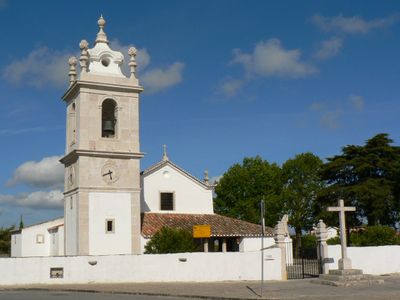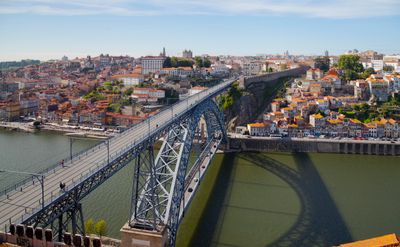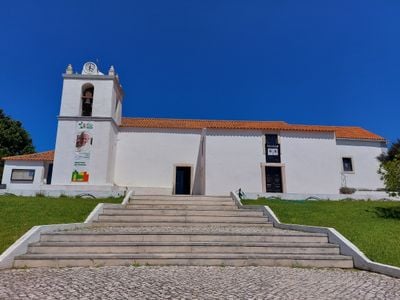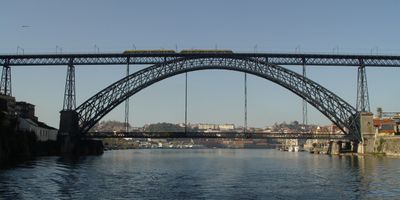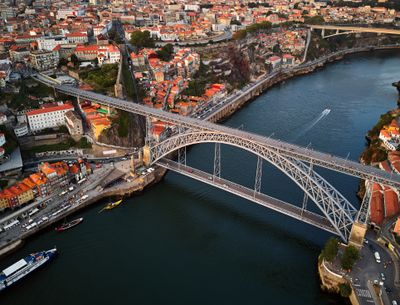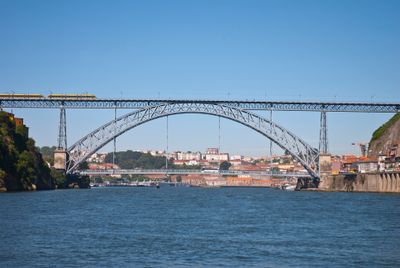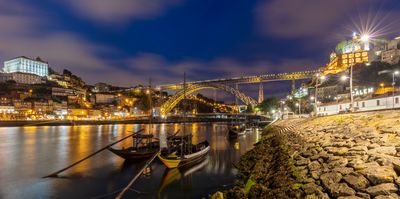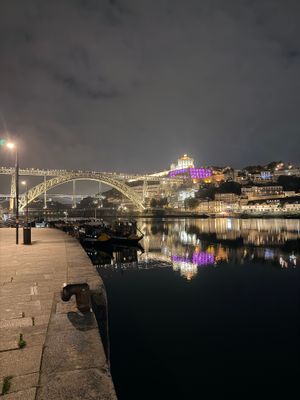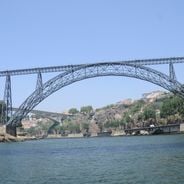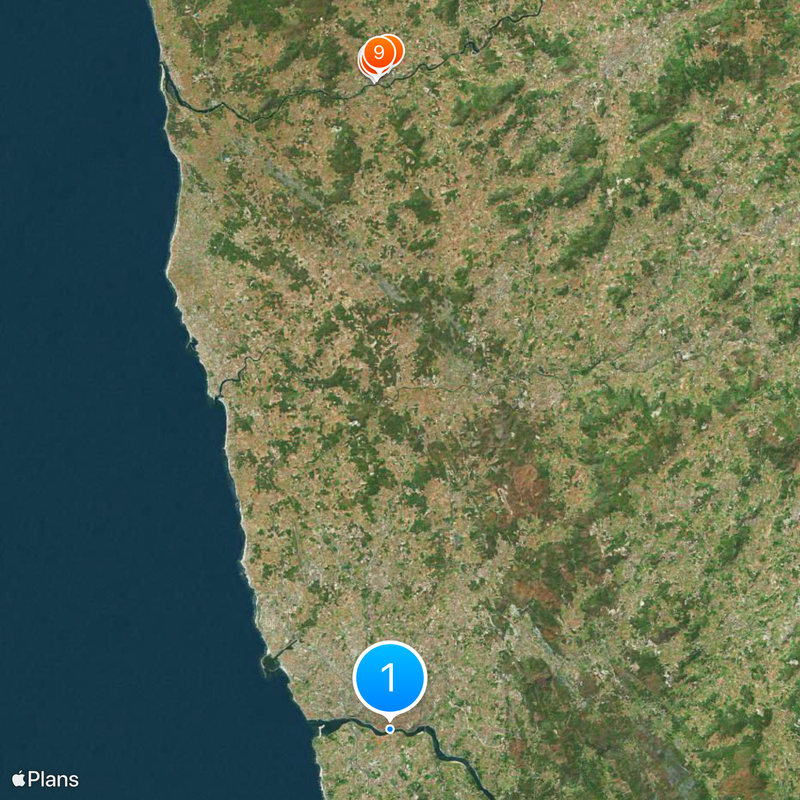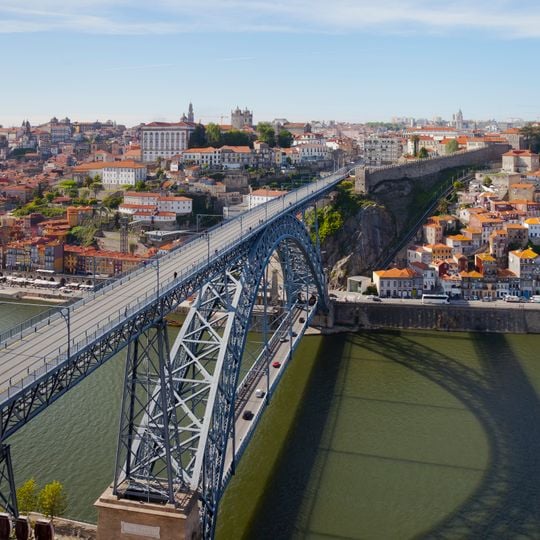
Dom Luís I Bridge
Dom Luís I Bridge, Multi-level iron arch bridge in Porto's historic center, Portugal.
Dom Luís I Bridge is a two-level iron structure with two traffic levels that crosses the Douro River. The structure measures over 385 meters long and its main arch spans approximately 172 meters across the water.
The bridge was built between 1881 and 1886 and replaced an earlier suspension bridge at the same location. Belgian engineer Théophile Seyrig, who worked with Gustave Eiffel, designed this revolutionary structure.
The bridge links two districts and forms part of Porto's UNESCO World Heritage site recognized since 1996. It shapes the city's visual identity and demonstrates Portugal's industrial strength during the 19th century.
The upper deck is used by metro trains while the lower level carries cars, pedestrians, and cyclists. Visitors can view the city and river from either level depending on which route they choose.
The structure was named after King Dom Luís I and received Cultural Heritage status in 1982. The nighttime lighting casts reflections on the water and makes the structure particularly visible after dark.
Location: Santa Marinha e São Pedro da Afurada
Location: Cedofeita, Santo Ildefonso, Sé, Miragaia, São Nicolau e Vitória
Inception: 1881
Architects: Léopold Valentin, Théophile Seyrig
Official opening: October 31, 1886
Height: 45 m
Length: 385.25 m
Longest Span: 172 m
Reference: EN 1
Part of: Historic Centre of Porto
Address: Rua da Ribeira Negra, Avenida de Gustavo Eiffel, Avenida Vímara Peres, Avenida Diogo Leite, Avenida da República
GPS coordinates: 41.13972,-8.60944
Latest update: December 12, 2025 17:48


Bridges are a part of our daily lives. They have connected banks, valleys, and communities for centuries. This collection presents structures from various periods and regions. From medieval stone arches to modern steel constructions, these works demonstrate the evolution of engineering. The Rialto...

Porto, city in the north of Portugal, gives many reasons to stop here. You can see historic bridges that make the city known. Explore old churches and visit museums with interesting collections. The city also hides lesser-known places that are just as charming, from the Douro River crossing the city...
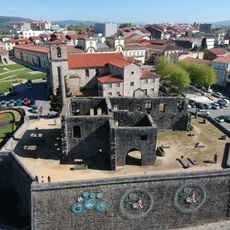
Paço dos Duques de Bragança
43.2 km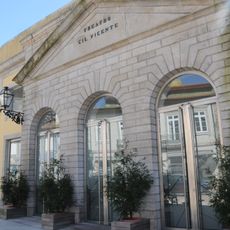
Teatro Gil Vicente
43.4 km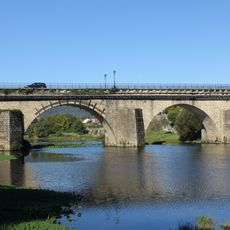
Ponte de Barcelos
43.2 km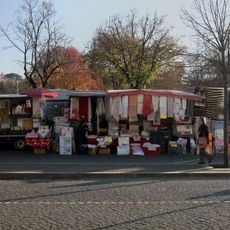
Campo da Feira de Barcelos
43.7 km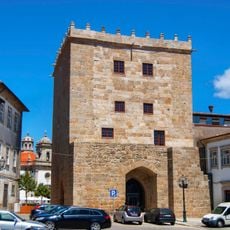
Torre da Porta Nova
43.6 km
Estádio Adelino Ribeiro Novo
43.9 km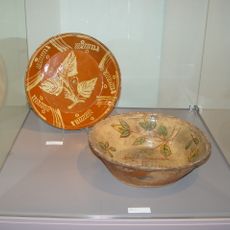
Museu de Olaria
43.4 km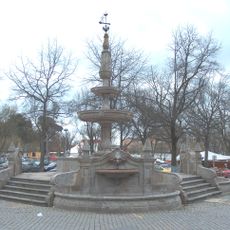
Fuente del Campo da Feira
43.8 km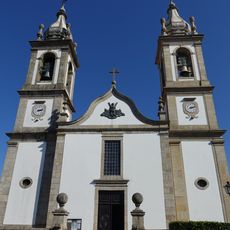
Igreja Paroquial de Barcelinhos
42.8 km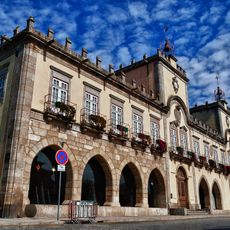
Edifício e Igreja da Santa Casa da Misericórdia de Barcelos
43.4 km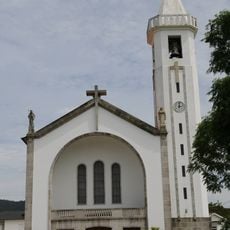
Igreja Paroquial de Várzea
41.8 km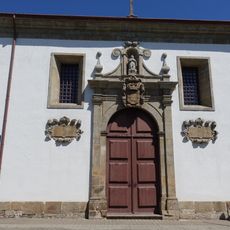
Igreja de Nossa Senhora do Terço
43.9 km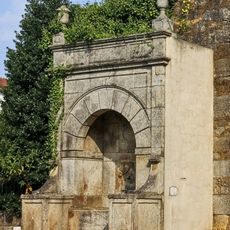
Fonte da Rua da Misericórdia
43.4 km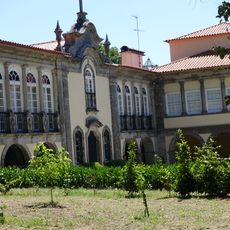
Casa de Santo António de Vessadas
42.9 km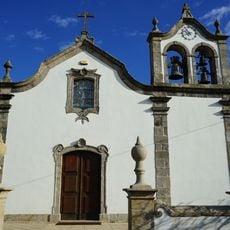
Igreja Paroquial de Rio Covo
43 km
Tribunal Judicial de Barcelos
43.5 km
Edifício na Avenida dos Combatentes da Grande Guerra, n.º 72 a 80 e 90
43.9 km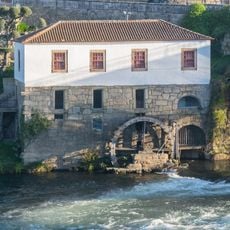
Azenha da Ponte
43.2 km
Capela de São Francisco
43.4 km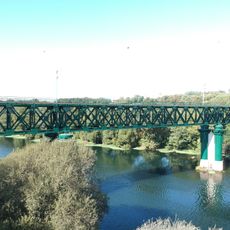
Ponte Ferroviária do Cávado
43.5 km
Praia Fluvial de Barcelinhos
43.2 km
Pombas
44.3 km
Cuco, Rouxinol e Ocarina (Rota do Figurado de Barcelos)
43.8 km
Minhota (Rota do Figurado de Barcelos)
44 km
Peregrina
43.9 km
Statue, Work of art
44 km
Statue, Work of art
44.2 km
Statue, Work of art
44.4 kmReal people, real opinions — but not verified.
Visited this place? Tap the stars to rate it and share your experience / photos with the community! Try now! You can cancel it anytime.

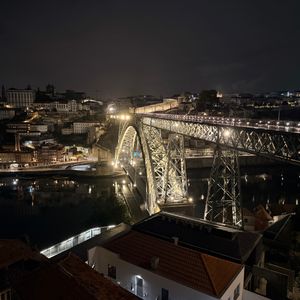
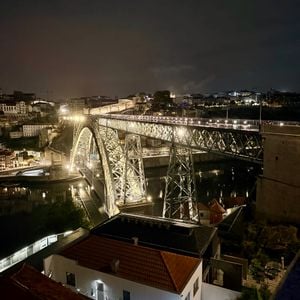
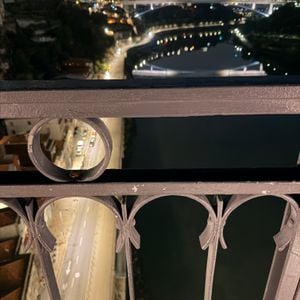
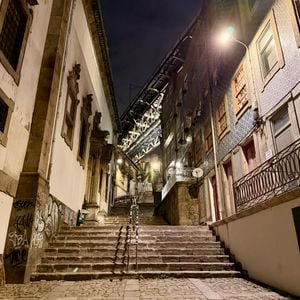

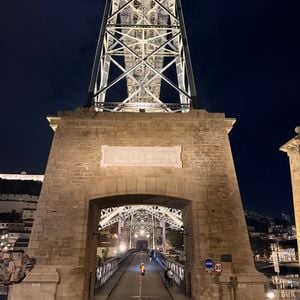

Discover hidden gems everywhere you go!
From secret cafés to breathtaking viewpoints, skip the crowded tourist spots and find places that match your style. Our app makes it easy with voice search, smart filtering, route optimization, and insider tips from travelers worldwide. Download now for the complete mobile experience.

A unique approach to discovering new places❞
— Le Figaro
All the places worth exploring❞
— France Info
A tailor-made excursion in just a few clicks❞
— 20 Minutes
